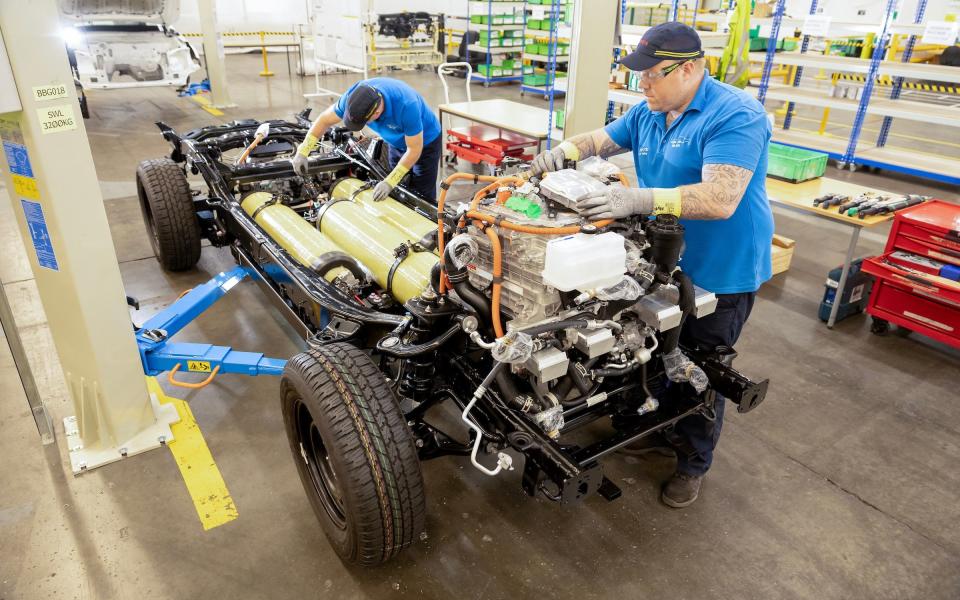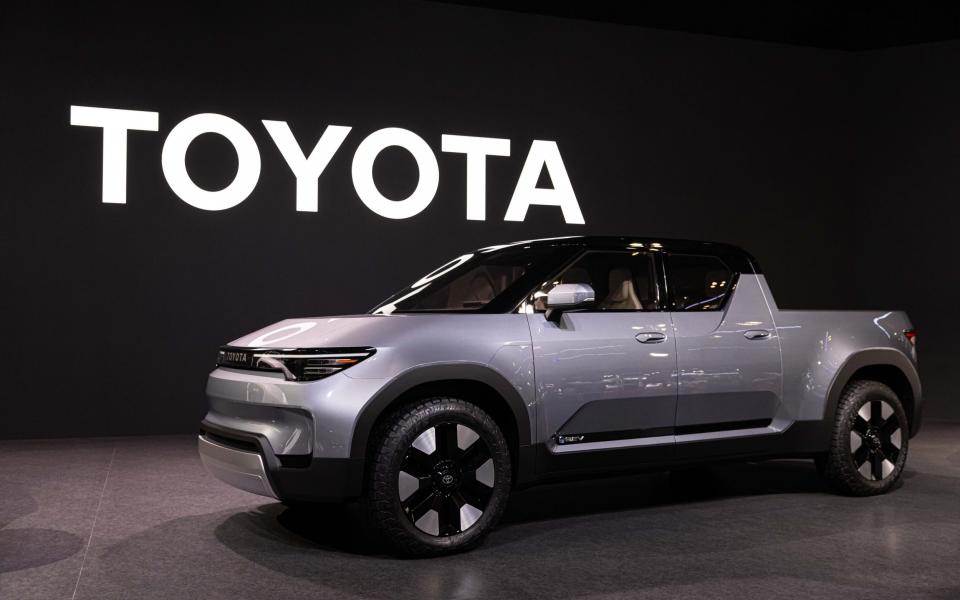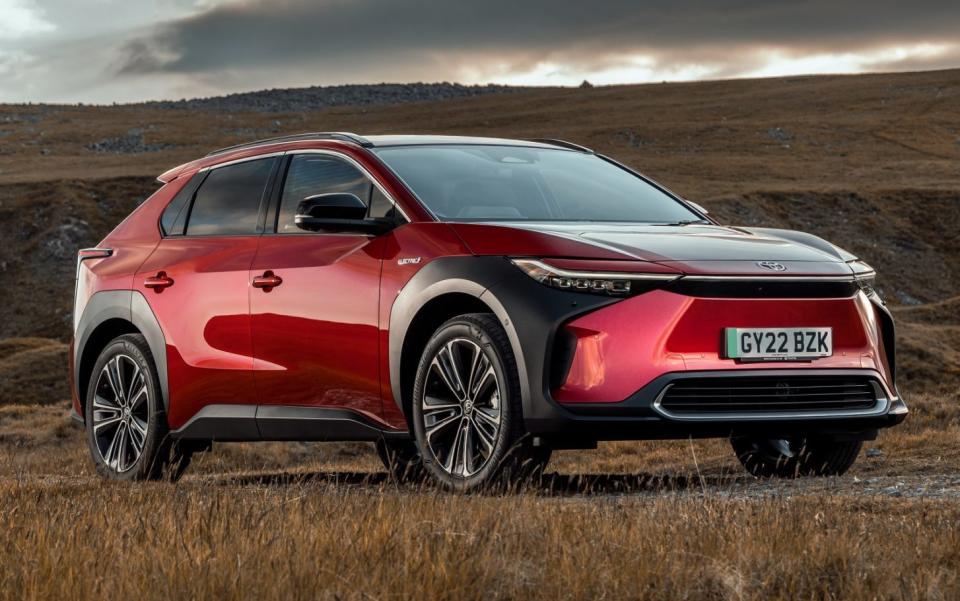The shiny concepts on the Toyota and Lexus stands at this year’s Japan Mobility Show ranged from massive luxury monospace vehicles to SUV crossovers and sleek coupe models, but they all had one thing in common: they were all battery-powered.
This wouldn’t be a surprise on any other manufacturer’s stand, but Toyota has been beating the drum for hydrogen energy for decades, pouring money and resources into fueling its fuel cell cars. Successive FCEV prototypes from Krüger gave rise to the Mirai, which, after the Honda Clarity (another company that has eschewed hydrogen for battery power), was the most successful hydrogen sedan in the world. But at Toyota’s board level, the Mirai is now considered a failure.
The £63,500 Mirai has been sold in handfuls around the world and although 500 will be on the streets of Paris at next year’s Olympics, this groundbreaking car has proven to be a financial disaster, barely breaking its cost can recoup, let alone the sky-high costs of developing custom-made 700. bar hydrogen tanks, fuel cells and control systems.
No hydrogen success
Hiroki Nakajima, Toyota’s Executive Vice President and Chief Technical Officer, said at the show that the Mirai has not been a success at all. “We already tried with the Mirai,” he says, “but unfortunately it didn’t work out because of the hydrogen filling station, there are few of them… That’s why we changed our strategy from passenger cars to commercial cars.”
The hydrogen industry initially described the introduction of hydrogen cars and trucks as a ‘chicken-and-egg situation’. The chicken (fueling infrastructure) was needed as much as the eggs (fuel cell vehicles) and both had to be developed at the same time. They weren’t. Now the chicken has caused the egg’s demise.
Fuel cell development will continue, but Toyota now sees applications in heavy transport, marine, bus and coach and rail as a natural fit for the technology, although the company remains committed to pick-ups and the hydrogen tie-up with BMW.
Nakajima says its fuel cell packs will still be shaped and sized so they can be fitted to a passenger car if the need arises, and we were shown a series of 10,000 psi shaped pressure tanks that Toyota has been working on. They are flat parts, which can be installed in place of a battery in an electric vehicle, and saddle-shaped parts, which sit on either side of a cardan shaft in a rear-wheel drive car or pick-up. Engineers say they are aiming for a lifespan as long as current round objects, which are legally 15 years long in Japan (although Toyota is pushing authorities to allow a longer lifespan).


We also saw the prototypes of the latest third-generation fuel cell, which is now half the size of the previous unit, which was the size of an airline carry-on bag. It also has stainless steel separators instead of the titanium ones of the old cell, so production costs are much lower. Overall, the cost of fuel cells would be halved, with a 20 percent greater range (meaning they are more efficient) and a maintenance requirement that is 2.5 times less.
New battery strategy
But at this year’s show, it was the battery strategy that Toyota was promoting. There is still a lot of ground to make up, as Toyota has been behind in battery technology for years as it distrusts lithium-ion chemistry and hopes the world will adopt its hybrid gasoline-electric technology as an environmental standard. Some might say Toyota is entering the market just as its rivals are beginning to question their headlong run down the battery-electric route.
Nevertheless, Toyota claims that the new Gen-3 batteries will hit the market from 2026/2027 and will set new standards, with longer driving range, faster charging and lower costs.
Lexus, the company’s luxury division, will become a fully EV brand by 2030, while the Toyota brand will continue to offer a range of alternative drive technology, including hybrids and plug-in hybrids, but will have between 30 and 40 percent EVs by 2030 to sell. 2030. Gazoo Racing will continue with combustion engines, but using CO2-free liquid fuels such as hydrogen and e-fuels.


This strategy will continue Toyota EVs into the next decade with three different battery technologies, including a claimed breakthrough in solid-state battery technology. But this summer, Toyota CEO Koji Sato admitted that the solids research was not going well and that it could take longer than planned, so the new schedule for introductions in the distant future could prove as accurate as it predicting next year’s weather.
In the here and now, however, the reduction in battery height, with cells only 100 mm high and a power take-off on the side instead of on the top, is an important part of the new architecture, as it allows the new generation of electric vehicles to be lower are. more wind-cheating shapes. Toyota is working with Panasonic on the cell design, but, along with BYD, is one of the few automakers to build its own battery cells. These proposed new cells, which will be installed in Toyota and Lexus concept models at the Japan Mobility Show, will go into production at a new factory in 2026.
The cells will be fitted to 1.7 million of the 3.5 million annual battery electric vehicles (BEVs) that Toyota expects to sell worldwide by 2030. In addition to improving the robustness and ease of maintenance of the cells, electric vehicles are often scrapped after fairly minor setbacks for fear of internal short circuits, increasing insurance costs – there are also savings in cell production, which can be expensive and time-consuming to to produce.
Evolution, not revolution
Like Rolls-Royce, Toyota has a tendency to improve what’s already there, and that shows in the batteries. The first ‘Performance’ battery, scheduled for 2026/2027, will use modified lithium-ion chemistry with more nickel in the nickel-manganese-cobalt (NMC) cathode material and modified electrolyte to increase range to approximately 700 kilometers. It also enables fast charging from 10 to 80 percent in 20 minutes, and a 20 percent cost savings compared to Toyota’s current battery model, the bZ4x.
The ‘popularization’ battery will be Toyota’s lithium iron phosphate (LFP) chemistry. LFP is a cheaper and more robust technology favored by Chinese car and battery manufacturers such as BYD and Catl, but has the disadvantage of not being as energy dense as lithium-ion, previously the choice of bus and coach applications where requires more space to place them. However, more recent developments have seen them successfully used in battery-powered passenger cars. Toyota’s version costs 40 percent less than the cells in the bZ4x and has a fast charging time of 30 minutes for a charge of 10 to 80 percent.


There is also a ‘High Performance’ battery, which is based on lithium-ion NMC chemistry, but with an even higher nickel content in the cathodes and a bipolar construction. The expected range for this new battery is 1000 kilometers, with a cost saving of 10 percent compared to the Performance battery and a fast charging time of 10 to 80 percent in 20 minutes. They are expected to hit the market by 2027 and 2028, although cost claims are highly dependent on volatile commodity markets, and nickel-enriching cathodes can be a risky business as the metal is less thermally stable than the cobalt it replaces and burns at a high rate . very high temperature.
When asked about this, Nakajima said Toyota’s batteries have different and inherently safer “internal arrangements” than other cells and that he will offset some of the cost savings in additional battery safety. “The most important thing is how we preserve it [the new battery chemistry] Certainly. Safety is the most important consideration and if we find that we cannot guarantee safety,” he said, “we will not do so.”
The fourth chemistry is solid; a holy grail for the automotive industry, where the ions in each cell move through a solid medium rather than the less stable liquid electrolyte of current vehicle battery technologies. Benefits here include stability and faster charging, but there are still issues with the safety and longevity of solid-state batteries. The first problem concerns the dendrites, which grow from the cathode like calcium stalagmites and threaten to puncture the separators and cause a short circuit and fire. Toyota engineers say this problem affects all batteries and they have resolved it. However, the short lifespan issue is still a work in progress and Toyota says it has a lab solution but is working to scale it up for mass production.
Solid-state battery technology is said to be ready by 2028 with a range of 620 miles and fast charging in 10 minutes for a 10 to 80 percent charge, but there are no cost projections.
So that’s it…
Fuel cell cars were once part of a utopian, broader hydrogen future. It seemed like such an elegant solution, with beautifully simple engineering (water to water, and the same machine used to generate electricity and then used in reverse to create hydrogen). Sure, it wasn’t as efficient as battery electric, but that missed the point that if you generated electricity using solar or wind, there might be times when you couldn’t use the electricity generated and hydrogen would serve as an energy buffer. can be used. . That problem remains, as does saving carbon dioxide to mitigate climate change and global temperature rise.
Still, it was all good while it lasted, although I can’t resist quoting Beth Dawson of Fuel Cell Systems on the topic of saving hydrogen refueling for certain types of users: “Once you have the hydrogen, you can do it smart things.”